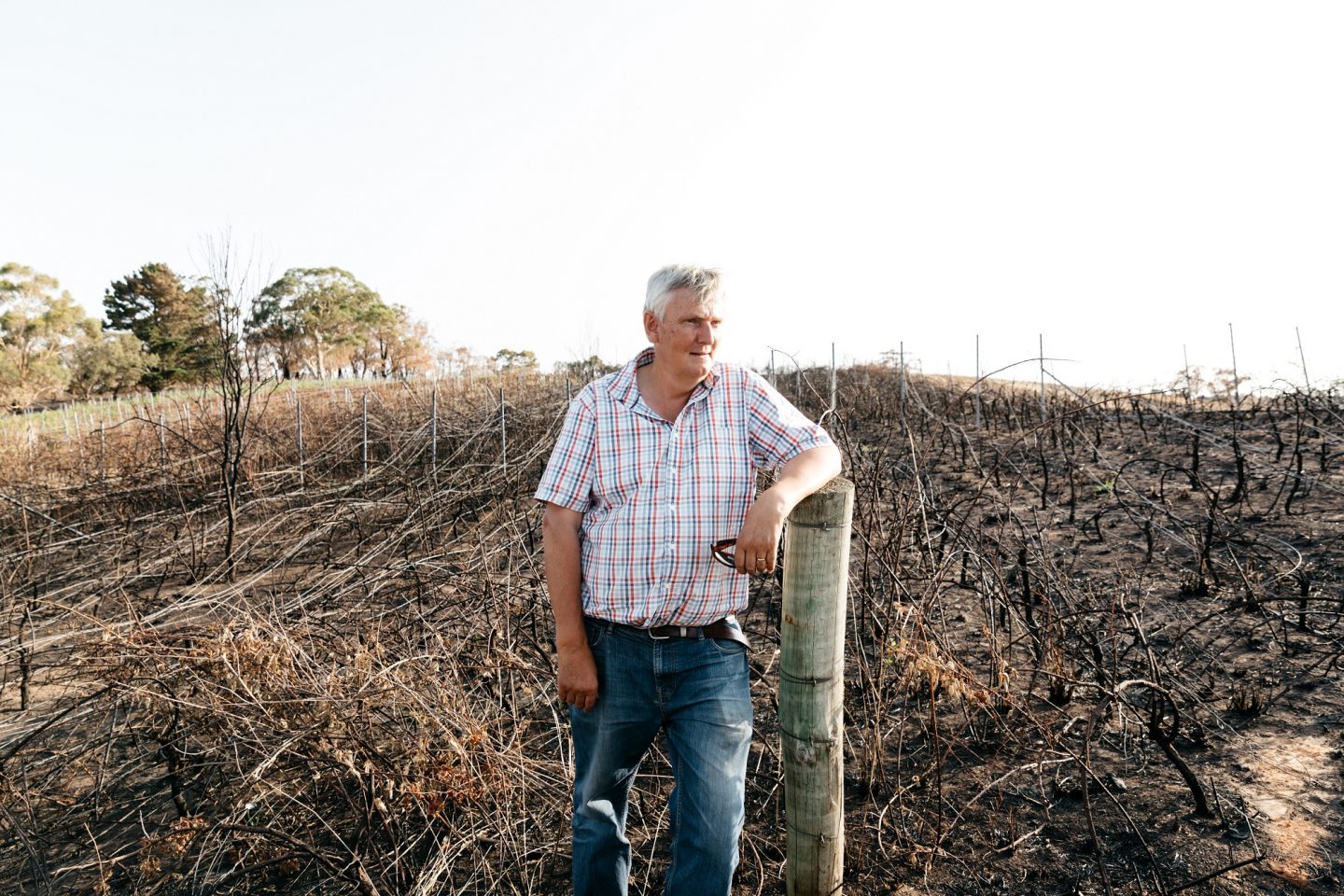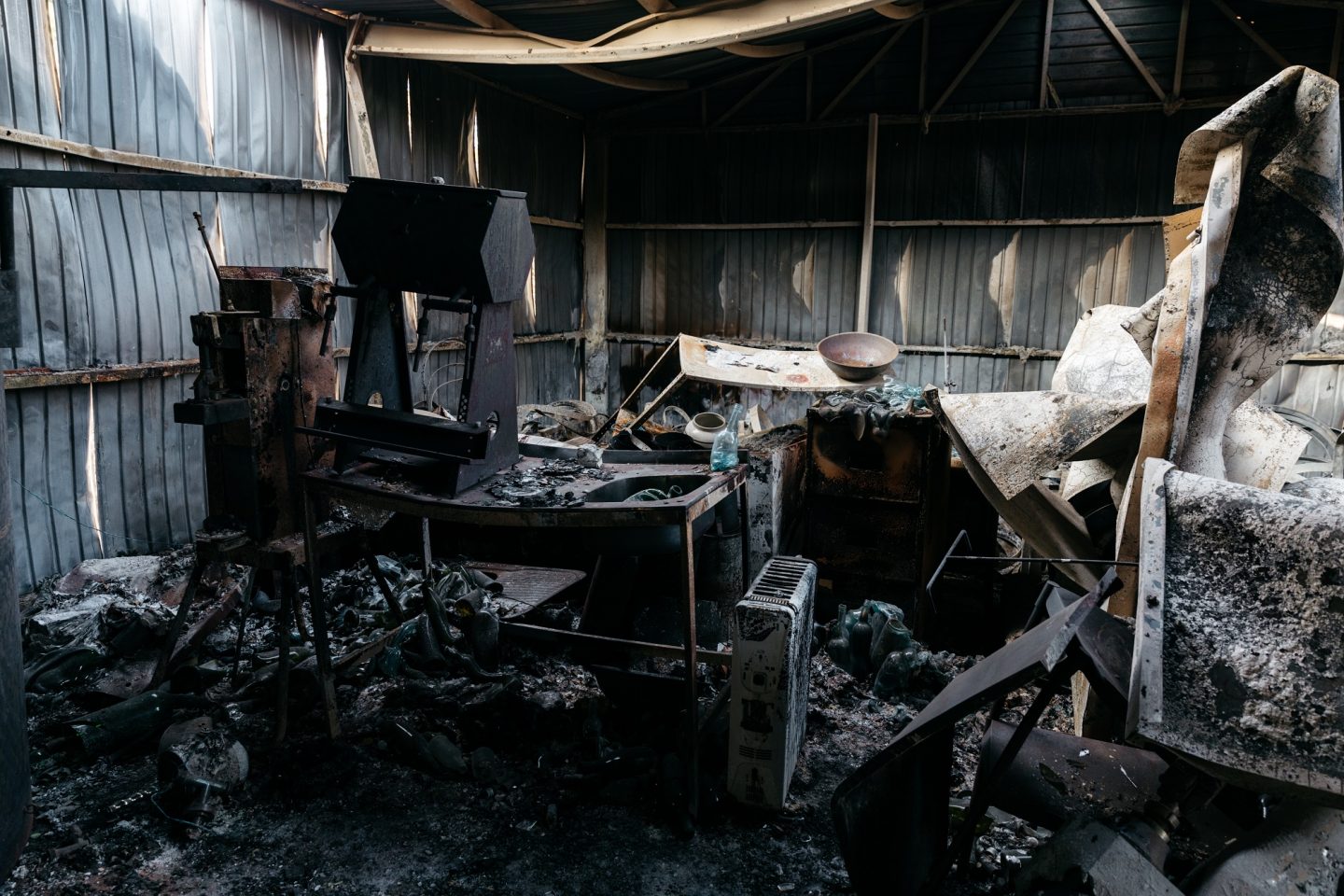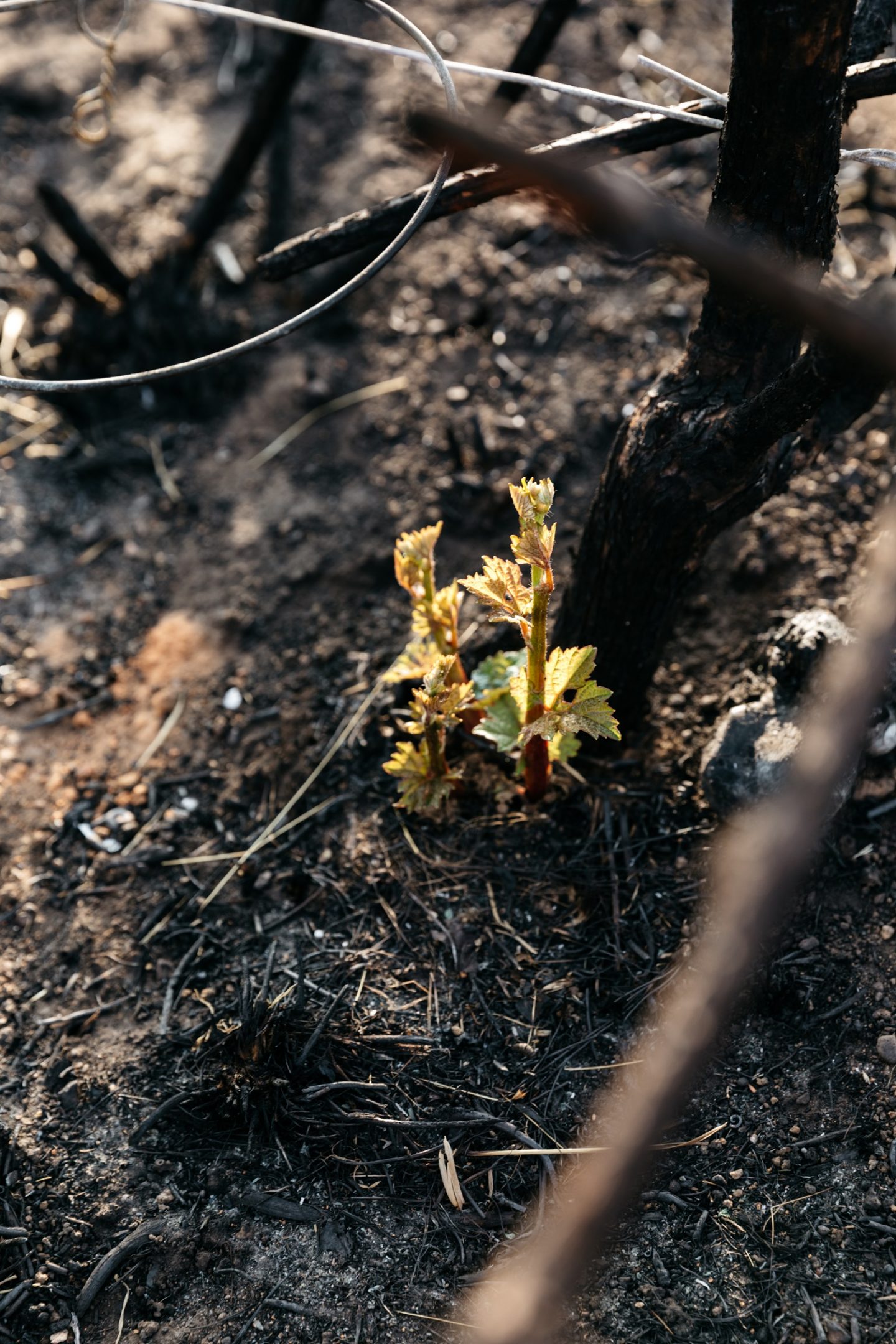James Tilbrook is still coughing from smoke inhalation as he picks through what was left.
“You’d be right to say I’m shell shocked,” he says. “We
lost everything.”
The boutique Tilbrook estate winery and vineyard lay half
way between Lobethal and Lenswood in the Adelaide Hills. What started in 1999
with eight acres of chardonnay and pinot noir vines became a winery and cellar
door with sweeping views of the hills.
And in a matter of hours on 20 December 2019, it was all
reduced to ash. I speak to him that afternoon, just a few hours after he
arrived on the scene.
The fires burned at every point of the compass. Across the
Blue Mountains in New South Wales, three million hectares went up in smoke.
Victoria, meanwhile, sweltered through a heatwave that catalysed a blaze that
would see 700,000 hectares in East Gippsland blackened in a matter of days.
At
the same time, in the Adelaide Hills, a fire that started in Cudlee Creek swept
out of control. In the hot, dry conditions of early summer, it quickly tore
through 25,000 hectares of prime agricultural land.
 The spread of the fire can be seen across Tilbrook Estate’s vineyards, from the burnt-out vines on the right to the glimpses of green to the left that, just maybe, have avoided damage
The spread of the fire can be seen across Tilbrook Estate’s vineyards, from the burnt-out vines on the right to the glimpses of green to the left that, just maybe, have avoided damage
When
the immediate threat had passed, hundreds of homes had burned along with an
estimated 30 per cent of wine-producing farms in the region.
At
9.30am on the day the fire came to his vineyard, Tilbrook’s wife, Annabelle,
their son and the family dog evacuated to Mount Barker. Tilbrook stayed behind
to defend their livelihood.
His
plan had been simple: fill a water tank on a nearby hill so that when the fire
came it could be gravity-fed down and used to defend the vines.
What
he didn’t realise was just how quickly the fire would spread. It was already on
approach as he arrived and the authorities, watching the situation deteriorate,
cut the power ahead of its advance.
With
no power, the water pumps that would normally push water through the system
were not working. When James learned this, he immediately understood what it
meant. The views of the winery were once used to promote their cellar door.
From that vantage point, he surveyed the landscape knowing there was nothing he
could do.
“The
fire just raced through,” he says. “Our house is on a separate property near
Charleston and at about 11am I had to choose between staying to defend the
vineyard, or going to defend our home. I had to make that choice. The result is
our house – our home – is still standing, but the vineyard’s gone. We’ve lost
our livelihood.
“Once
I was safe I went to help a friend with his home. I figured the vineyard was
toast, there was nothing I could do there, so I might as well go help friends.”
When
he returned, James found the fire had “cooked” decades-old vines and torn
through the old machine shop where they made their wine. It had burned so hot,
the readied wine bottles melted.
“We
were only a small producer, we make 1000 cases a year, but all our stock was in
there,” James says. “All the barrels of our last vintage. All our wine in
tanks. All the wine in the tank is still there, but it’s probably cooked too.
“I
got a photo of some bottles that were sitting on top of a filing cabinet and
the bottles have melted or collapsed. Someone said to me that the melting point
of glass is 1400 to 1600 degrees. It would have been fucking hot in there.”
Taking
it in, the grief wells inside James. They weren’t the only ones. Neighbours who
stayed to defend their properties described watching the fire approach. Gum
trees lining nearby road sounded like fireworks as they exploded into flame.
Others have lost their homes, their businesses. Years of human thought,
ingenuity and care had been reduced to charcoal in a matter of minutes.
 The blackened insides of Tilbrook Estate’s winery
The blackened insides of Tilbrook Estate’s winery
There is also a
certain irony to it. For years James and Annabelle had been worried about
climate change and its role in disrupting the clockwork nature of the seasons.
They understood how it threatened to make everything a
little worse. Bushfires would be turbocharged, while torrential rain would fall
in huge, soil-eroding quantities.
As
individuals, they had done their bit by raising awareness about sustainability
and building their operation to be eco-friendly as an inspiration to others.
The goal was a winery powered by renewable energy with no carbon footprint. As
James and his family may now be counted among the first to directly feel the
impact of climate change in Australia, the irony is not lost on them.
“There’s
something going on, anyone with half a brain can see that,” James says. “Last
winter, we got maybe half the rainfall we would normally get. The Adelaide
Hills is one of the wettest parts of South Australia.
“We
started watering – we normally don’t start watering until after Christmas, but
we started in November. In 20 years, we have never watered in November. The
ground was that dry.
“We
just need the whole country to be acting on climate change, because that’s
going to change things.”
 Green shoots among the ash inspire optimism, but looks can be deceptive: for grafted vines, regrowth among the rootstock just means more work
Green shoots among the ash inspire optimism, but looks can be deceptive: for grafted vines, regrowth among the rootstock just means more work
With
that, James has to hang up the phone. He’s been waiting for Annabelle to
return, he says, and he can see her approaching. James has told her what had
happened, and she’s seen the photos he posted go viral on social media, but has
yet to view it for herself. Standing in the middle of it, being able to touch
the charcoal and smell the acrid smell of smoke is something else.
James
likens the experience to the last great turning point in his life: breaking his
neck in the 1980s. That injury prompted a change of career and of outlook. This
time around, he plans something similar. The couple plan to rebuild, rip-up and
replace where necessary, though this is easier said than done.
Every time he looks, James’ finds something new to fix as he picks through the wreckage. There is always something to be added to the list, which is the real work, he says. The road to recovery is long and takes time. It isn’t always easy, but one day, eventually, you look up, and look around to find everything has changed.
Related Article
Bushfire-affected South Australian businesses tell us how to help
Royce Kurmelovs is an Australian freelance journalist and author of The Death of Holden (2016), Rogue Nation (2017) and Boom and Bust (2018).
Get the latest from The Adelaide Review in your inbox
Get the latest from The Adelaide Review in your inbox